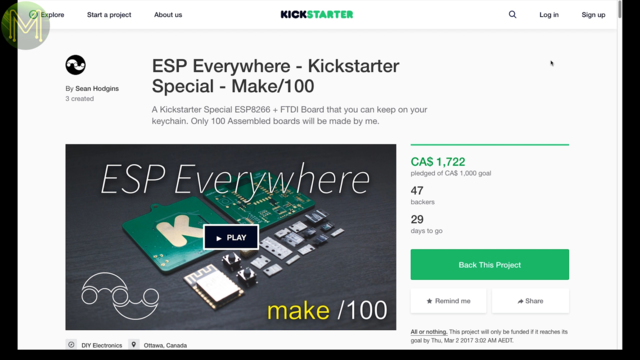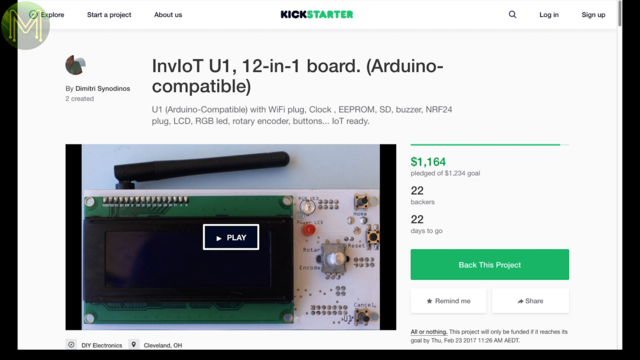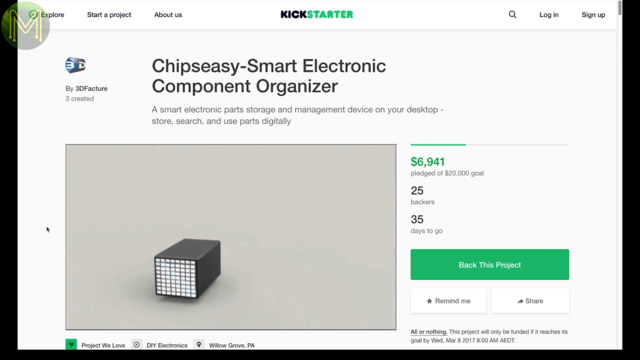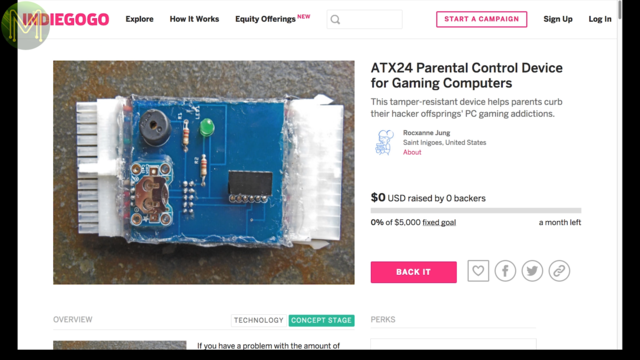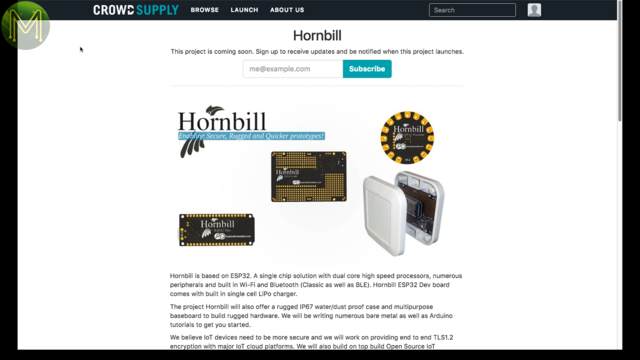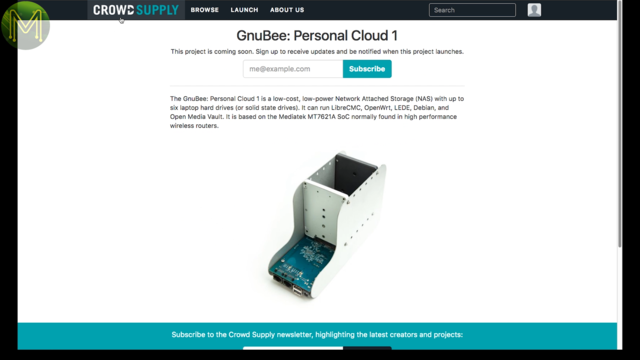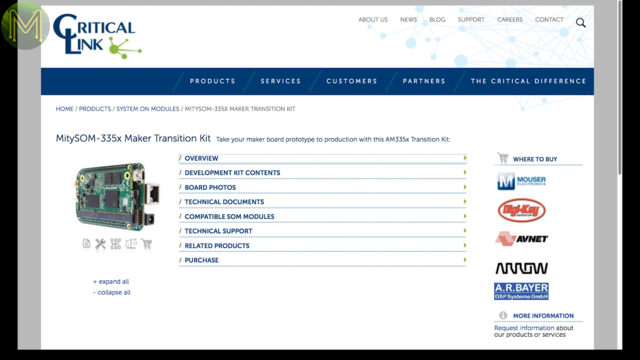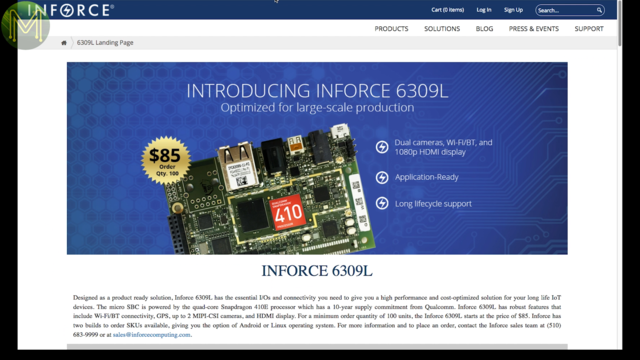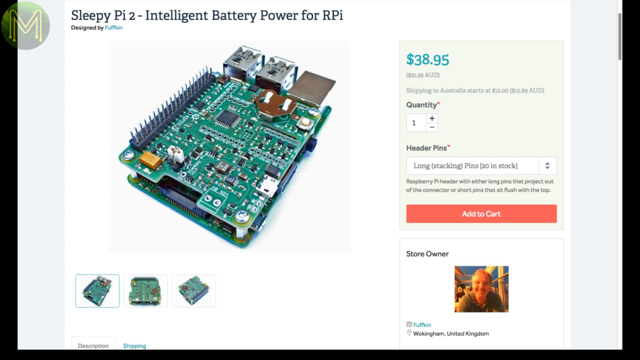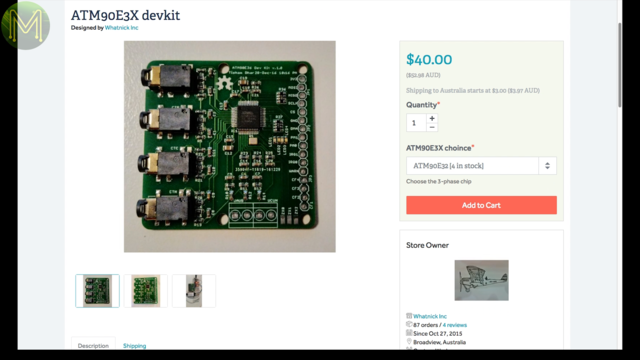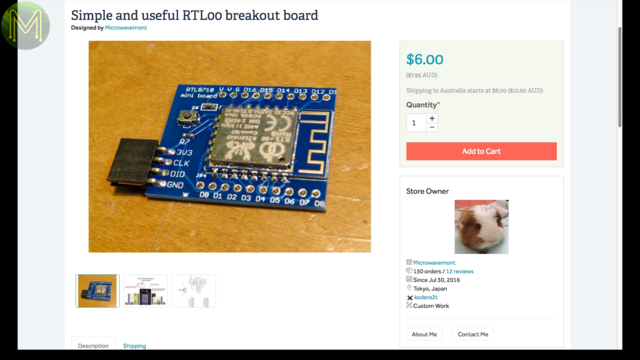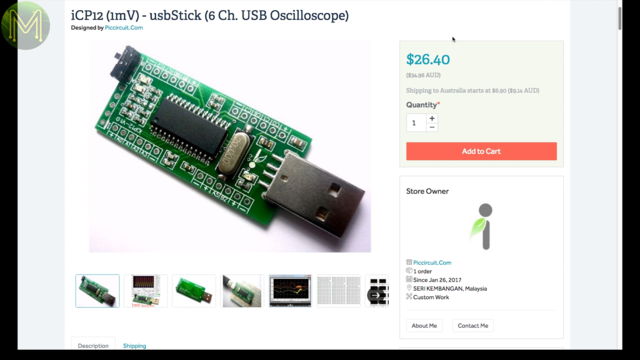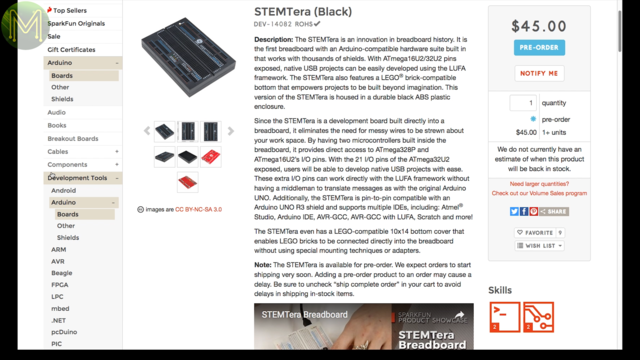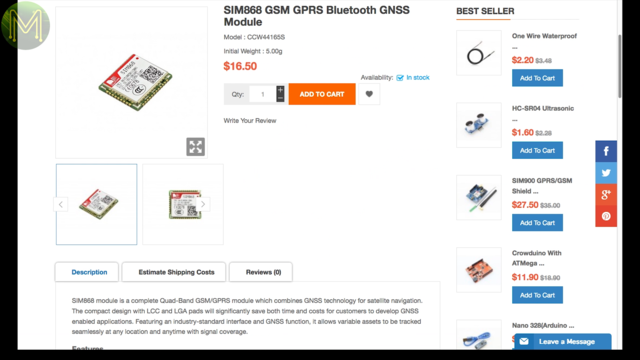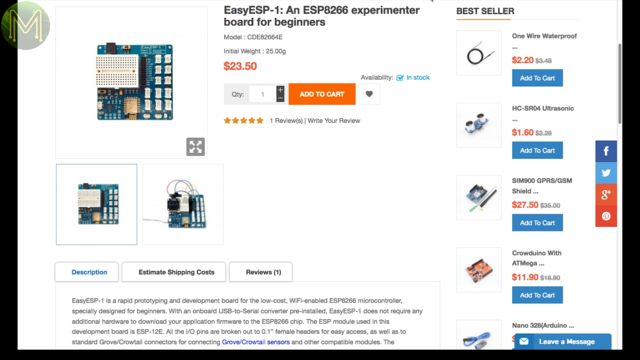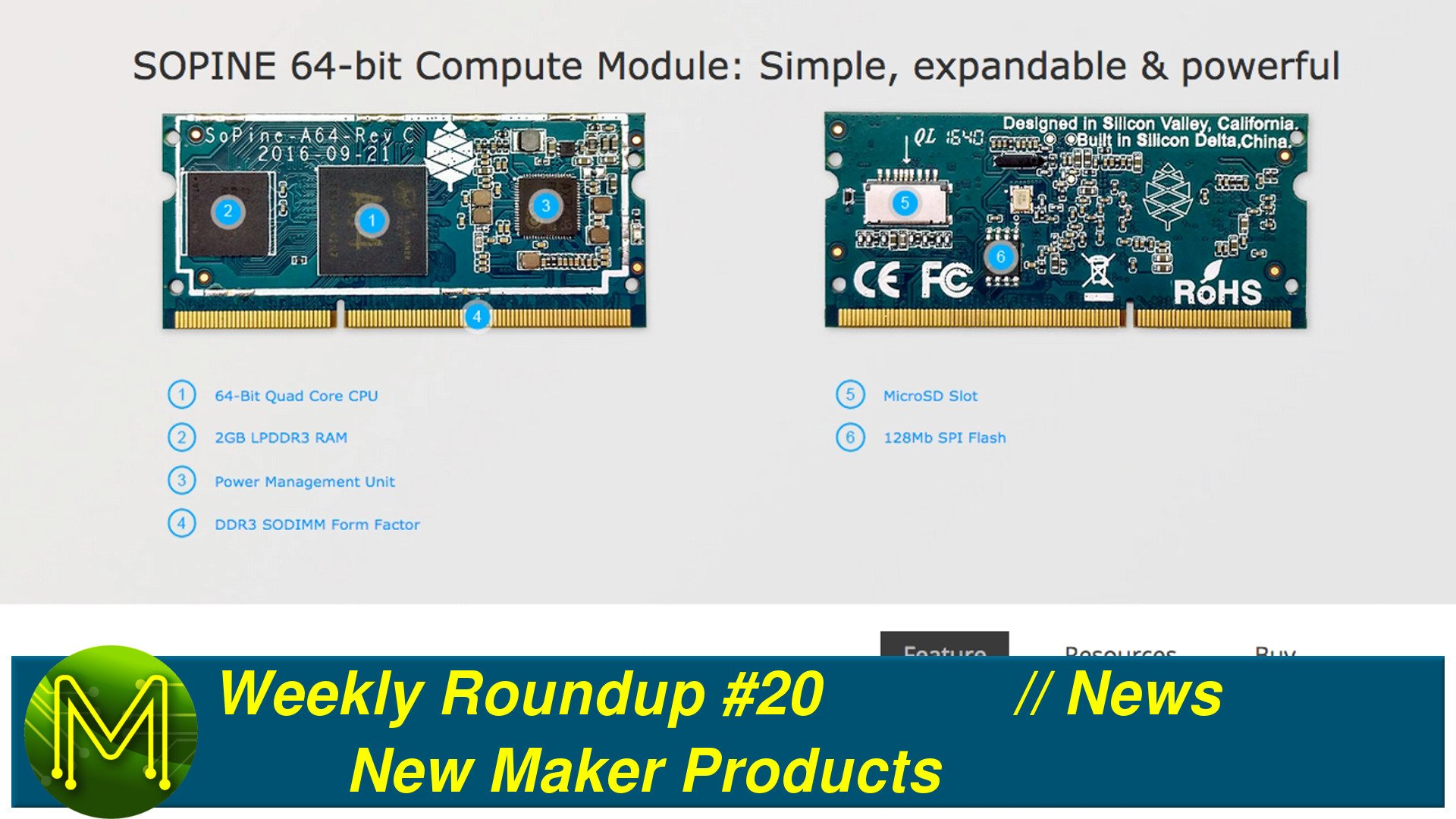Weekly Roundup #21 - New Maker Products // News
This week’s Weekly Roundup we’re seeing another mish-mash of stuff; from power monitoring, to LoRa, to SODIMM based SBCs.
Oh, I’ve also added an index in the YouTube description so you can look things up quickly.
Crowd Funding
KickStarter
ESP Everywhere
First up a Kickstarter from the Make/100 initiative. This attempts to put an ESP8266 on your keychain.It’s a great idea, but personally I would have spent a bit more time reducing the size of the thing.
Mine
Mine isn’t really a Maker product, but included it because it’s a cool idea. It’s essentially a modular controller allowing you to place buttons, dials and sliders in any combo you want.bots_alive
bots alive is yet another robot slash STEM product, but this one is different as it has inbuilt AI and computer vision algorithms. So you can get it to avoid obstacles, path tracking through mazes and interacting with other robots.It seems to be taking off.
InvIoT U1
The InvIoT U1 is an Arduino based board that contains an ATmega328, (I think, although it’s a little unclear), LCD, SD, RTC, buzzer, buttons, LEDs and sockets for an NRF24 and ESP. It’s a nice little board if you want a quick human interface.Probe2Bolt
If you’ve ever had to connect probes to terminal blocks then you’ll know it can be a real pain. Probe2Bolt is a pretty simple concept. It’s just a bit of shaped metal with a bent bit at one end so you can attach a probe. Simple but effective.Chipseasy
Remember those CD or DVD storage boxes that could eject the disc of your choice? Well the Chipseasy is like that, but for small electronic components. You just select the component that you need from your PC and it’ll eject the draw and show you where it is. This is great, and certainly beats my current method.The only issue I see with it is the price. Hmmm.
IndieGoGo
Oh man. There’s so much garbage on IndieGoGo. It’s tough wading through it all.
Aerobot II
The Aerobot II is a new SBC that contains an ARM Cortex-M3 and M0 core with 2.4GHz RF, FPGA, codec chip, 9DOF IMU, ethernet and USB ports, SD, JTAG, Pi compatible GPIO header, and socket for XBee.The board can be set into user mode; where the Cortex-M3 controls and programs the M0 and FPGA, or system mode where the Cortex-M0 is the boot loader and communicates with a PC via USB.
ATX24 Parental Control Device
Parents of teens would understand this next one. I’ve had four of them so I know what it’s like when your teen gets carried away when playing games.The ATX24 is… well… an idea in concept, but I wouldn’t call it good. It provides a method where you can effectively turn off the PC at pre-determined times.
It sits in-between the power supply and the motherboard.
Yeah… well… this would be bypassed in a matter of minutes.
Crowd Supply
Crowd-Supply has a handful of pre-launch products.
Hornbill
The Hornbill is in pre-launch on CrowdSupply. It’s an ESP32 based board in various styles that… seems to have LiPo battery management, but not clear what else.It’s made by the same guys who made the Explore M3, which you might have seen on HackADay.
GnuBee
This one is a low cost NAS based on the Mediatek MT7621 SoC, which is a SoC designed for NAS solutions. Contains a dual-core 880MHz MIPS CPU and 5 port gigabit switch and I guess a bunch of SATA ports.Will be an interesting one when it goes live.
Pidgeon 1
The Pidgeon 1 is also in pre-launch. It’s a small board with an STM32 MCU, RS485 interface, and CC1120 and CC1190 transceiver radio chips which operate in the 868 and 915MHz frequencies.Honorable mentions
BitScope Blade for Raspberry Pi
Element14 have launched the BitScope Blade series for Raspberry Pi which comes in three flavours.- The Uno; which is aimed for Makers.
- The Duo; aimed for those wanting desktop or servers.
- and the Quattro; for creating compute clusters.
Adafruit CircuitPython Beta
AdaFruit have just released the beta of their CircuitPython which is a fork of MicroPython but adds in support for the SAMD21 and ESP MCUs and adds in a lot of APIs for hardware.It’s a great move for those not wanting to get their hands too dirty in the world of electronics.
MitySOM-335x
We’re starting to see more and more SODIMM type SBCs coming out. This is a great move. However, what I’d like to see is some sort of standardization going on. Modules are coming out with a mix of Pi Zero type compatibility and a range of other formats.Here’s another SODIMM SBC with a carrier board in a Beagle Bone style.
It contains TI’s Cortex-A8 Sitara SoC running at 1GHz, either 1G or 256M RAM, 1G NAND flash, 8MB NOR flash, dual GbE, LCD with touch, 2 USB, 3 SDIO ports, and a bucket load of serial interfaces.
Unfortunately, since the format isn’t common they are expensive.
Inforce 6309L
Inforce Computing came out with their Snapdragon 410C based board a while ago. Now they are selling a low cost version called the Inforce 6309L at around $85 US, but the catch is you have to order 100 minimum.Contains 1G DDR3 RAM, 8G eMMC, SD, WiFI, bluetooth, GPS, dual MIPI-CSI, USB2, HDMI and the usual Pi GPIO.
Maker Shops
Tindie
TCA9546A
Over at Tindie, there’s a 4 channel I2C multiplexor breakout. Which comes in handy if you have a lot of I2C busses or I2C devices with conflicting addresses.It also has voltage level translation. between 1.8 through to 5V.
TCA9406
or if you just want a bidirectional voltage level shifter for an I2C bus, then this one will do the trick. Based on the TCA9406.Sleepy Pi 2
Sleepy Pi is a Pi hat that allows you to control power to the Pi. It runs off battery or DC jack and contains an ATmega329, (which can be programmed from the Pi), and RTC so you can shutdown your Pi and power it up on demand. It also has a current monitor so you can keep track of just how much juice you use.ATM90E3X
This board is yet another energy monitor based on the ATM90E36. It’s not really a product that you can plug and play, but a development kit for checking out the capabilities of this chip. You will need your own split core current transformers.RTL00 breakout board
This breakout board is pretty simple. It allows you to solder up an RTL8710 module and breaks out everything for easy access. Contains the all important reset button for easy programming.LIR2032 coin cell battery charger
Coin cell LiPos are starting to be very common now, but chargers seem to be fairly scarce in comparison. This is a simple Lithium Ion coin cell battery charger.iCP12
Circuit Technologies have put up their USB oscilloscope on Tindie, but it’s more expensive there. Just get it from their website as it’s on sale at half the price.AdaFruit, Seeed, SparkFun, DFRobot, DigiKey
Adafruit PiRTC
If you regularly don’t have the time then AdaFruit can give it to you. It’s designed for a PI, but can be used on anything. oh man… when I first look at these things they are available but when I come back to them they’re out of stock.STEMTera
The STEMTera is a great idea. Made by an Ozzie mate of mine; JP Liew. He’s made several other products all of high quality. This one is a breadboard with inbuilt ATmega328 and ATmega16U2. Two MCUs giving you 21 GPIOs. Works with pretty much all the IDEs and comes with a Lego compatible bottom. Just plug it into your PC and go.The Cheap Side
Over on the cheap side of town we have…


